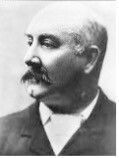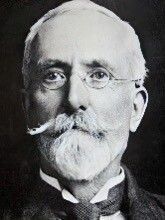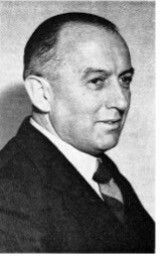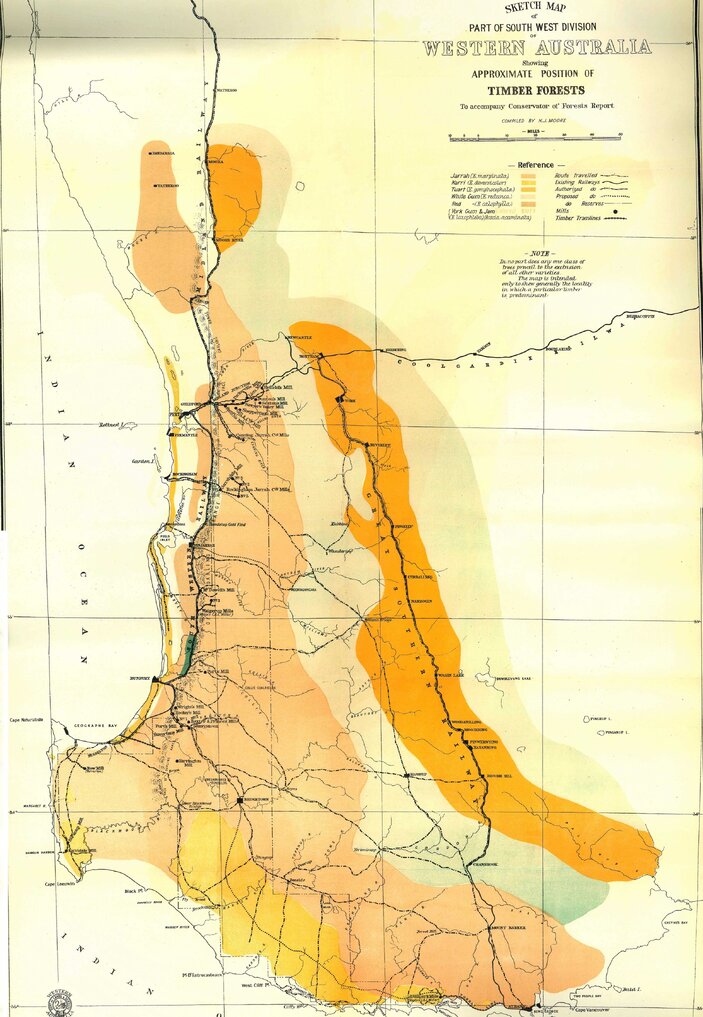
John Ednie Brown
A hands-on kind of a guy, Ednie Brown started his research into the Forests of Western Australia in March 1895. On arrival into WA he headed straight out into the country to map and record the extent of the Western Australia forests. Brown inspected nearly all the forest land in less than a year, travelling over 5000 miles (8047 km). He recorded three volumes and descriptions of the commercial trees as well as the secondary class of trees. Charles Moran MLA, pronounced Ednie Brown as “The first authority of timber in Australia” and with that recommendation, John Ednie Brown was appointed the first Conservator of Forests in 1896.
He made recommendations for the formation of a Forest Department, setting aside areas of the forest as State forest and he encouraged the introduction of softwood plantations.
Read what he writes about the Tuart tree on page 15 of his book – The Forests of Western Australia and their development (1899)
Following Ednie Browns untimely death in 1899, C.G Richardson stepped in as acting conservator. His experience was limited and he unfortunately made no progress with Ednie Browns recommendations and the demise of the Western Australian Forests continued. So much so that a Royal Commission was held in 1903-04. See commission outcomes below. The first of many that reviewed the management of our Forests.

Sir David Hutchins
Sir David’s most notable contribution to Forestry was in his recommendation and insistence for demarcation of Forests in Australia which, in his view, was essential for conserving natural forests. In 1914, he was invited to visit Australia and comment on the Australian Forestry with special reference to Forestry in Western Australia.
Read his recommendations in “A discussion of Australian Forestry with special reference to Forestry in Western Australia”

Charles Lane-Poole
A man ahead of his time, Charles Lane Poole described the management of the forests of Western Australia as ‘unscientific and wasteful.’
Educated in Forestry at Nancy university in France, Charles Lane Poole did his best as the Conservator of Forests (1916-1921) to lead West Australians and the government of the time into a bright and sustainable future with Forestry. Worth millions of dollars (pounds), Lane Poole could see with planning and careful management, our forests could take the country and its people richly forward. But, the agricultural focus of the Premier created great frustration for Charles Lane Poole and he eventually resigned his position of Conservator of Forests in October 1921. Before he left, he wrote the Forests Act 1918 that made several very important recommendations. Including; creating state forests and timber reserves, the recommendation of a Forest Department to manage the vast timber resource sustainably with working plans, the development of Forestry schools and regulating the timber industry to ensure it was viable for use long term by all. You can read the Forest Act of 1918.
In 1920, Charles Lane Poole prepared a statement for the British Empire Forestry conference in London. You can read all about that here – British Empire Forestry conference 1920
A primer of forestry – The principle forest trees of Western Australia – under supervision of C.E Lane-Poole primer of forestry CE lane poole 1922.pdf

Stephen Lacky Kessell
Originally serving under Charles Lane Poole, Stephen Lacky Kessell became the Conservator of Forests in 1923 and remained there until 1941. Slowly but surely, Stephen Kessell implemented the vision of his predecessor and during his time as conservator, Western Australia made greater inroads towards our state forest targets and the establishment of a sustainable timber industry.
Although regarded as a quiet man, he is noted for this forthright quote:
“…the Anglo-Saxon settlers who populated Australia brought with them no traditions of forestry as a rural industry, and for 100 years or more the forests were looked upon as an enemy to be slaughtered”. — Kim Kessell, quoted by Roe, M. Read more about Stephen Kessell here

